Individual Winners
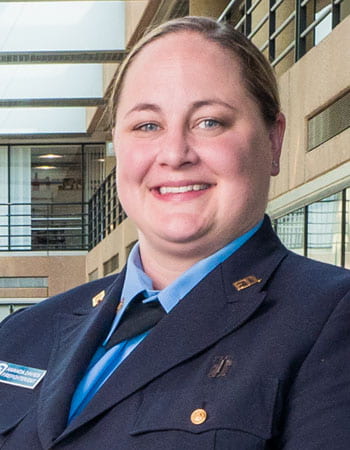 Amanda Davies Grants Management Specialist, Special Operations/ Homeland Security Division, DC Fire & Emergency Medical Services Department (FEMS)
Amanda Davies Grants Management Specialist, Special Operations/ Homeland Security Division, DC Fire & Emergency Medical Services Department (FEMS)
One of the challenges at the beginning of COVID was that if the DC Fire & Emergency Medical Services Department (DCFEMS) continued to scale its operations to address public health risks, the City would soon run out of money. This is where Amanda Davies stepped in, helping to secure federal funding to reimburse the agency for the procurement of Personal Protective Equipment and overtime of front-line staff that were risking their lives for the residents of Washington, DC.
This herculean task involved hours of tedious documentation of expenses and tracking of employees’ overtime to meet the requirements of the Federal Emergency Management Agency’s Public Assistance Program. Prior to this, when disasters were declared in the District for blizzards or flooding, the DC Government did not request federal assistance, in part due to the sheer complexity of the process.
However, Ms. Davies took on the project in addition to her regular duties, and while on Paid Family Leave after the birth of her second child. Moreover, the process that she developed became a template for other agencies across the District, and around the country, thus bringing positive recognition to the DC Government.
“It is an honor to be a uniformed member of the Fire and EMS Department,” says Ms. Davies, who recently celebrated her 15th anniversary since joining the firefighter recruit school. It is here, working with the agency, that she met her husband, also a DC firefighter. Transitioning into a finance and grants-management role eight years later, and then taking on additional responsibilities during the pandemic, felt like a call of duty. “This goes to show just how important my DCFEMS family is to me,” says she.
To date, Amanda Davies managed over $35M in federal assistance and local grant dollars, most recently securing the Assistance to Firefighters Grant Award in the amount of $920,000. The funding allows firefighters to take workshops on improving mental and physical health, as part of the agency’s wellness initiatives.
The impact of her work goes even deeper. Serving as the Alternate Agency Program Coordinator for the Purchase Card Program, and assisting in the management of DCFEMS’ Operations Bureau, Special Operations Division, over the last seven years, Ms. Davies dramatically improved the agency’s budget planning and fiscal management. She prides herself on speaking both “firefighter” and “budget”, and sharing her knowledge with colleagues, regardless of their rank, to help them become more comfortable with the agency’s spending process.
The results are not lost on her team, who wholeheartedly supported her nomination for the Cafritz Awards.
“Throughout our work, Ms. Davies demonstrated professionalism, teamwork, knowledge of her agency's work, and a proven desire to serve DC residents,” says Muniru Sumbeida, a Grants Program Manager at the DC Homeland Security and Emergency Management Agency. “Ms. Davies is not only a sworn firefighter in uniform but also an accomplished financial and grants specialist whose efforts brought millions of dollars back to the DC government, thereby helping offset the anticipated balance shortfall at the beginning of the pandemic.”
 Donna Henderson Administrative Law Judge, Administrative Hearings Division Labor Standards Bureau, DC Department of Employment Services
Donna Henderson Administrative Law Judge, Administrative Hearings Division Labor Standards Bureau, DC Department of Employment Services
“Justice delayed is justice denied,” says Judge Donna Henderson, explaining her motivation to pursue an electronic filing and case management system for the Administrative Hearings Division (AHD) within the DC Department of Employment Services’ Labor Standards Bureau (LSB).
In addition to modernizing and streamlining an outdated, all-paper records management system, the new workflow allowed the judicial process to resume virtually just under 45 days of the COVID lockdown in 2020.
“Bluntly stated, without her, the District’s workers’ compensation system would have essentially ground to a halt,” says Gregory Lambert, a fellow Administrative Law Judge (ALJ). “Because of her work, full evidentiary hearings could proceed to final decisions, and injured workers received benefits that enabled them to pay rent, feed their children, and receive critical medical care.”
Although the benefits of the system are obvious in retrospect, the idea met resistance when it was proposed several years prior to the pandemic. Judge Henderson united recalcitrant internal and external stakeholders while ensuring their voices were heard throughout every stage of the transition.
Donna Henderson is recognized by colleagues for her work ethic and perseverance. When she was hired in 2014, AHD had a backlog of 68 worker compensation cases, with some cases pending decisions for a year or longer. Judge Henderson immediately went to work to determine the status of each case, and move each to a decision. Within six months, with the assistance of her colleagues, all the backlog cases were resolved, either by way of a decision or moving towards a resolution.
What Judge Henderson had done to set up the department’s electronic filing and case management system, however, goes well beyond her job description. For example, she'd never drafted a Requirements Document prior to starting on this project and had to take a procurement class to learn how to write a Statement of Work.
Assisted by other ALJs during the early stages, Judge Henderson researched major software implementation and went so far as to interview every stakeholder connected to the process to solicit their feedback on project requirements. Her vision was to create a system that would reduce the administrative workload for all staff.
Juggling a full hearings caseload, she then worked with the vendor to customize the “off-the-shelf” product to ensure that all AHD’s processes and functions were considered and included. Judge Henderson spent countless hours working to define each document’s process flow, identifying the types of internal user accounts and roles, creating autofill documents, drafting dropdown fields, and providing input on both the big picture and the nitty-gritty technical details.
The compensation system in DC continues to operate, applauded by staff and stakeholders alike. While others have since moved off the project, Judge Henderson stayed with the project, ensuring the system stays current and otherwise manages its daily operation.
Her advice to the future generation of public leaders? Judge Donna Henderson says, “Hold that vision, and surround yourself with a community that supports that vision. After that, stay committed and do what needs to be done.”
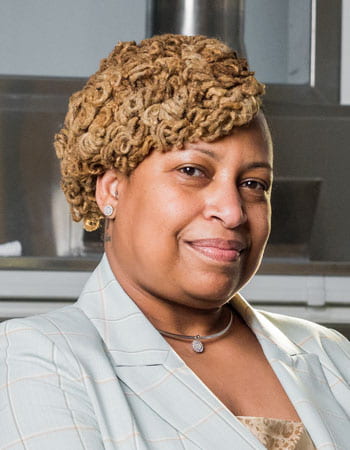 Kimberly A. Lassiter Supervisory Forensic Mortuary Technician, Medical Examiner Transport Team Unit, DC Office of the Chief Medical Examiner
Kimberly A. Lassiter Supervisory Forensic Mortuary Technician, Medical Examiner Transport Team Unit, DC Office of the Chief Medical Examiner
Kimberly Lassiter is a passion-driven caretaker for the voiceless. At the height of the pandemic, Ms. Lassiter was tapped to mobilize the COVID Disaster Morgue (CDM), and was responsible for the transport, storage, and release of nearly 720 decedents in the District who perished as a result of the virus.
“It was a flawless operation,” says Ms. Lassiter, with both humility and pride. Amidst national reports of mounting death tolls that overwhelmed the government’s capacity to care for the dead with dignity, in Washington, DC, not one body was lost, left on a floor, or stacked upon one another. The deceased were identified and released to the funeral homes with speed and efficiency unseen for an operation of that size.
To better understand the enormity of the effort, it is important to know the workings of the CDM behind the scenes. Serving as a liaison between local and federal agencies, Ms. Lassiter helped identify and secure discrete locations to set up mobile morgue units that would perform at the same standard of excellence as the central lab at the DC Office of the Chief Medical Examiner (OCME).
She, along with her team, then created a specialized racking system that maximized storage capacity and that allowed each deceased person to have a separate compartment. Subsequently, Ms. Lassiter created a systematic process for locating each decedent, which was updated daily to ensure an error-free process of release to funeral homes.
Ms. Lassister also handpicked and coalesced the 30-member team that supported this 24-hour operation, providing training on the policies and procedures of decedent transport, release, radiographic imaging, identification process, sanitation and proper PPE donning and doffing. “Most importantly,” says she, “I instilled in my team that every decedent was to be treated with respect and dignity, and nothing less was acceptable.” In recognition of her services, Ms. Lassiter was awarded the Diamond Sharp Medal from the Air National Guard.
For Kimberly Lassiter, this work is a true calling, rooted in a personal tragedy. With the death of her mother, she became a legal guardian of six children at the age of 21. Ms. Lassiter began her career at OCME as an autopsy technician. In the next 25 years, she would participate in more than 3,000 forensic autopsies, experiencing first-hand how the drug epidemic and gun violence impacted the District.
In addition to the post-mortem examinations, Ms. Lassiter was heavily involved in helping to identify victims, including many children. She is credited for creating OCME’s rehydration process that allows for identification of decomposed individuals. Ms. Lassiter also spent countless hours reconstructing faces, purchasing make-up and wigs to prepare decedents for identification. Her work helped bring closure to countless grieving families.
“Ms. Kimberly Lassiter continues each day to dedicate herself to serving the citizens of the District of Columbia,'' says Dr. Sasha Breland, Deputy Chief Medical Examiner at OCME. “This unparalleled service is not for the accolades, but simply because she loves what she does and believes that everyone deserves respect in life and in death.”
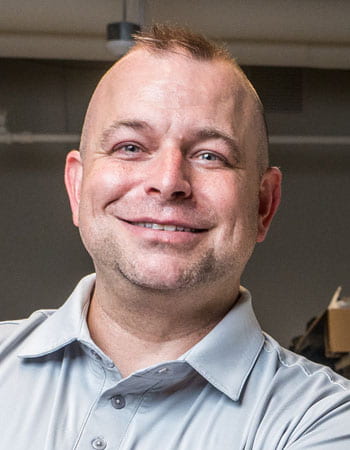 Scott Sibley Community Liaison Specialist, Office of the Director, DC Department of Human Services
Scott Sibley Community Liaison Specialist, Office of the Director, DC Department of Human Services
Mr. Scott Sibley, more affectionately known in DC circles as the “King of the Gray Area”, is a masterful community organizer, partner and friend to those in need. As a Community Liaison Specialist for the DC Department of Human Services (DHS), Mr. Sibley helps identify and source partnerships that support the mission of the agency, when government services alone cannot fill the gap in services.
When a massive fire at the Capper Senior Housing Community displaced over a hundred individuals in September 2018, there was no existing mechanism for matching requests by the impacted community with the donations by those who wanted to help.
Mr. Sibley built the Community Assistance electronic request system used by DHS to provide emergency, specialized, and personal items and services, on top of the traditional government assistance. He also designed a database to track financial and in-kind contributions, while ensuring this process was fully compliant with government regulations around private donations.
To date, the associated value of financial and in-kind donations that Scott Sibley gathered for DHS clients exceeds $4M. Here is a small snapshot of his work in the “gray area” of public service delivery:
- Providing items related to health, hygiene, hypothermia, and hyperthermia to permanently-encamped residents;
- Accepting and distributing coats, clothing, and shoes for all DHS customers who requested the support;
- Meeting and exceeding Back-to-School supply needs for sheltered students by creating the #DCBookBagChallenge;
- Annually meeting holiday needs of families seeking support through the Home for the Holidays Campaign;
- Securing desperately-needed Personal Protective Equipment, handwashing stations, touchless thermometers, and comfort kits for the congregate shelters and quarantine sites at the start of the COVID pandemic, faster than government procurement services could complete their buildout.
Mr. Sibley does not have a large team behind him. You can often find him on site, single-handedly coordinating deliveries and packing donations, showing up at all hours, on weekends and holidays to assist with emergencies. Even so, Mr. Sibley finds time to personally engage with partners and volunteers, working under the mantra, “Find those that strive to make a difference, – and then let them.”
A Veteran of Honorable Service, Mr. Scott transitioned into the DC Government in 2013. In his civilian life, he feels a call of duty to help. “Build each other while serving the mission,” he says. “And most importantly, never underestimate the power of community when we combine forces to love our neighbor.”
The model that Mr. Sibley created adds value to other DC Government agencies, looking to replicate these kinds of add-on services, at no additional cost to the taxpayer. His efforts did not go unnoticed by peers across the District.
“With his passion, dedication, and trustworthiness, Scott is a shining example of what District employees aspire to become and is very deserving of [this award],” says Clarissa Rucker, a Public Information Officer at the DC Department of Human Resources. “I can tell that Scott truly lives and breathes the mission of DHS, and makes a lasting difference in the District he serves every day.”
 Aisha Williams Emergency Preparedness Planning Specialist, Health Emergency Preparedness and Response Administration, DC Department of Health
Aisha Williams Emergency Preparedness Planning Specialist, Health Emergency Preparedness and Response Administration, DC Department of Health
As our nation’s capital and the world faced one of the deadliest public health crises in a century, it fell to Aisha Williams to develop and operationalize COVID-19 mass testing sites across Washington, DC. The first site went live as early as March 30, 2020, scaling up to five additional locations by January of the following year. Nearly 152,000 people (over 20% of the District’s population) were tested through these means, which helped trace and prevent the spread of the virus.
Like many of us at the beginning of the crisis, Ms. Williams admits to feeling scared and uncertain about the risks involved in spreading COVID to her young daughter and aging parents. Unlike most, however, she faced the challenge by going straight to the frontlines of the fight against the pandemic, saving countless lives.
As the Emergency Preparedness Planning Specialist at the Health Emergency Preparedness and Response Administration (HEPRA), Ms. Williams coalesced government agencies, medical providers, academic experts, contractors, and an army of volunteers to plan and execute every detail of the operation with excellence.
Educating and protecting her team, especially the frontline workers, was extremely important in this environment of uncertainty. Ms. Williams partnered with medical providers from the George Washington University to inform herself and others on the virus, and worked with the DC Fire and EMS Department to train staff on how to properly don and doff Personal Protective Equipment. She helped advise first responders on safety protocol, ensuring they know how to isolate effectively if exposed or infected, and made certain they had the necessary equipment to carry out their duties.
Setting up operations of this scale was truly a multi-disciplinary effort. Ms. Williams partnered with the DC Office of the Chief Technology Officer to ensure transparency and speed of information-gathering and served as a custodian of record for each sample tested by the Department of Forensic Services. Among other things, she created laboratory and patient requisition forms that later were re-purposed by other organizations setting up similar mass testing operations.
Furthermore, Ms. Williams helped expand testing to 25 congregate care settings, 8 fire stations, offered in-home testing, and set up pop-up testing sites in areas with high transmission rates. In short, due to her exceptional rapport with over 30 partners in local and federal government, as well as the public and private sectors, Washington, DC led the nation, per capita, in COVID testing, during those difficult months.
Undoubtedly, Aisha Williams laid the foundation for mass emergency response that made the District more prepared to face major public health crises in the future.
Ms. William’s quiet leadership style, coupled with unwavering courage, is her calling card. “I recall Aisha working 12–14 hour days for weeks straight to ensure a smooth operation, while also learning how to maintain an operation of this kind for the first time in history,” said Shadelle Gregory, a consultant at HEPRA. “Without her dedication and connections to the community, the testing sites would not have been as successful as they are.”
Team Winners
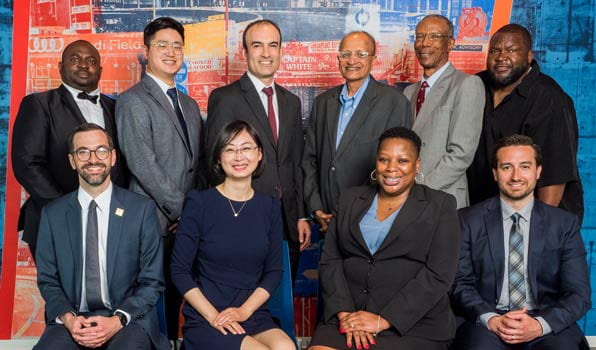 PaveDC Team District Department of Transportation
PaveDC Team District Department of Transportation
Back row (from left to right): Eric Onekon, Yuan Han, Andrew Kaufmann, Srinath Ananth, Delante Toyer, Robert Smith
Front row (from left to right): Ian Maggard, Ting Ma, Michaud Gray, Blake Holub
If any part of your commute across Washington, DC, was smooth and pothole-free, you have the PaveDC Team to thank for that. As a result of their tireless work and dedication, the District Department of Transportation (DDOT) resurfaced nearly 400 miles of roads, accounting for 25% of the total network. Since 2018, the team also restored nearly 1,000 unique blocks of sidewalks and 900 unique alleys, which improved pedestrian safety and the overall experience for those who live, work and visit our great City.
The exceptional team came together to solve one of Washington DC’s most critical infrastructure challenges. As little as five years ago, the District received a report card, showing more than 30% of its local roadways were in “poor condition.” Prior to PaveDC being formed, DDOT did not have a way to identify which roads were in most need of repair, or have a plan to fix them. Public frustration ran high, to the point that the Council held an oversight hearing to address the pavement conditions. DDOT’s PaveDC team was formed in response to this challenge, and quickly got to work.
The team created a process improvement strategy and created an interactive website that became a one-stop shop for the public to see scheduled road maintenance. Transparency of decision-making and communication processes allowed residents and business owners to safely move their vehicles in preparation for paving. “This program took the guesswork out of what will be completed this year,” said Advisory Neighborhood Commissioner Jason Fink. “The PaveDC team has created a level of transparency that should be followed across District Government.”
The success of the project was felt almost immediately, as the number of calls and emails requesting information about paving went down to almost zero. DC residents could now see what DDOT is doing across the City, and not just in their own neighborhood. The team has also played a key role in improving equity and inclusion, with a dedicated paving contract to focus solely on historically underserved and underreported communities in Wards 7 and 8 east of the Anacostia River.
Today, the PaveDC website not only includes resurfacing plans, but also sidewalk and alley restoration projects to inform the community on the full scope of construction efforts. In fact, with over 70,000 visits, the website became one of the most highly- trafficked online forums at DDOT. Other city administrations, including Baltimore and Houston reached out to PaveDC to express their interest in replicating the system for their use.
Lastly, PaveDC was able to diligently continue serving the District during the historic COVID-19 pandemic. Throughout the challenging times, the pace of construction remained uninterrupted and was on pace to meet another record amount of 140 miles, as was noted in Mayor Bowser’s 2021 Accountability Report.
What the PaveDC team accomplished is a gold standard of public service delivery. Former DDOT Director Jeff Marootian summarized it as such, “This effort has increased internal efficiencies, provided transparency, and revolutionized the way DDOT interacts with its customers.”
Winner of the Leadership in Crisis Team Award
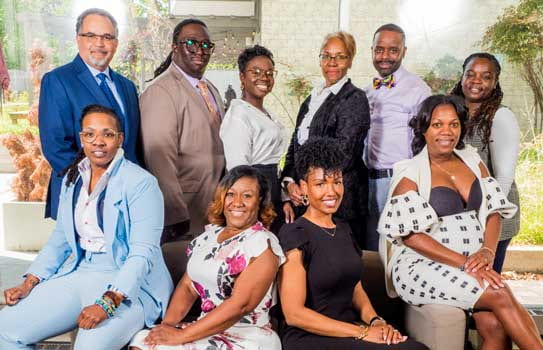 Pandemic Emergency Program for Medically Vulnerable Individuals (PEP-V) Team DC Department of Human Services
Pandemic Emergency Program for Medically Vulnerable Individuals (PEP-V) Team DC Department of Human Services
Back row (from left to right): Anthony Newman, Omar Jones, Lauren Bunns, Sheila Jones, Derrick Hampton, Kimberly Baxter
Front row (from left to right): Ashlee Burkes, Chicora Chatmon, Dena Hasan, Christian Howard
With the onset of COVID, public health experts emphasized the importance of isolating persons most susceptible to grave health complications, or even death. The DC Department of Human Resources (DHS) foresaw the risks posed to the elderly and people with pre-existing health conditions living in congregate care facilities and on the street and jumped into action.
The one-of-a-kind social and public health intervention to protect the most vulnerable DC residents became known as the Pandemic Emergency Program for Medically Vulnerable Individuals, or PEP-V. Under the auspices of the program, at-risk individuals were placed into commercial hotels in several key locations around the District. Such a level of partnership with the hotel industry, when it comes to serving the homeless populations, was rare at the early stages of the pandemic.
For clients entering PEP-V sites, the experience was life-changing. The PEP-V team partnered with Unity Healthcare, MBI Behavioral Health, and housing case management entities to offer clients 24/7 support, ensuring both safety and dignity. Individuals had access to primary healthcare and behavioral health support, transport to medical facilities, regular meals, housekeeping, and laundry. Where needed, clients could also request home health aide services to assist them with bathing, dressing, and accompaniment to medical appointments.
One of the distinguishing attributes of this intervention process is its case management support system. Each person who enters PEP-V gets assigned to a case manager, who works with them to identify more permanent housing options and additional supportive placements. Furthermore, case managers would assist each individual in becoming document-ready, which could involve obtaining a new ID, birth certificate, verification of income, and, where applicable, proof of employment.
Since the program started in March 2020, the program helped serve over 1700 persons experiencing homelessness in DC. As of September the following year, almost half of the clients transitioned to permanent housing, and over 75% were able to connect or reconnect with behavioral health services. “I have no doubt that, collectively, these actions and access to timely, culturally competent, quality, and effective services with formal integration between health and social services, quite literally saved the lives of these District residents,” said Marie Morilus-Black, the CEO of MBI Health Services, who supported the effort.
The success of the operation, at this scale and complexity, would not have been possible without the tireless work and dedication of the PEP-V Team, who devoted countless hours to ensure that clients feel truly cared for, sometimes at personal risk.
“There is no amount of sugar-coating available to soften the sacrifice given by the PEP-V Core Team to push through the many, many late-night white-board strategy sessions, leaving the comfort of their home in the middle of the night to support a client or a staff member in crisis,” shared Dena Hasan, the Director of Pandemic Mass Care Sites, speaking about her colleagues. “The only granule of sweetness needed to keep them moving is the understanding that they helped add joy, and improved the lives of their fellow neighbors experiencing homelessness.”
20th Annual Cafritz Awards Finalists
Congratulations to the individual and team finalists of the 20th Annual Cafritz Awards.
Individuals
- Nancy Boyd Nurse Educator, Saint Elizabeths Hospital, Office of the Chief Nursing Executive, DC Department of Behavioral Health
- Josh Gibson Director of Communications and Public Information Officer, Council of District of Columbia
- Rocelia Johnson Supervisory Program Analyst, Child Support Services Division of the Director Performance Management Unit, DC Office of the Attorney General
- Wanda Jones Resource Allocation Officer, Office of the Chief of Staff, DC Department of General Services
- Cherise Mattheson Program Coordinator, DC Office of Neighborhood Safety and Engagement
- Latrena Owens Executive Director, St. Elizabeths Hospital - East Campus Redevelopment, DC Office of the Deputy Mayor for Planning and Economic Development
- Angela Pettus Program Analyst, DC Department of Transportation
- Jonathan Rich Criminal Investigator, DC Office of the Inspector General
- Crystal Waters Supervisory Nurse Practitioner, Office of Medical Affairs, Saint Elizabeths Hospital
- Angelisa Young Acting Chief, Shared Services, Child Support Services Division, DC Office of Attorney General
Teams
- Substance Abuse and Mental Health Services Administration (SAMHSA) Team
DC Department of Behavioral Health
(Jennifer E. Allen, James C. Broughton, Susan Koehne, Daniel Riffle. Jocelyn Route) - DC Infrastructure Academy (DCIA) Team
Department of Employment Services
(Shana Blake, Shanetha Culbertson, Arlen Herrell, Aaron Sisko, Zevlin Staten, William Whitfield) - Dockless Mobility Program Team
DC Office of the Chief Technology Officer
(Gautam Chakravarty, Josh Lay, Venkatesh Patil, Matthew Sokol) - DSLBD Innovation & Equitable Development (Inno.ED) Team
DC Department of Small & Local Business Development Innovation & Equitable Development Division
(Caroline Howe, Katherine Mereand, Camille Nixon, Shannon Taylor) - Family Services Administration - Families (FSA-F) Team
DC Department of Human Services
(Noah Abraham, Darrell Cason, Jenna Cevasco, Rori Durham, Arthur McCoy, Vernard Portis, Thomas Roberts, Tanisha Schlechtriem, Tiffany Tyler, Kia Williams) - Homeless Education Program (HEP) Team
DC Office of the State Superintendent of Education
(Tanisha L. Brown, Nicole Lee-Mwandha, Danielle C. Rollins, Tasheen R. Stallings) - Emergency Planning and Security Fund (EPSF) Team
DC Office of the Chief Financial Officer Public Safety and Justice Cluster (PSJC)
(Frehiwot Deresso, David Garner, Elizabeth Holst, Patrice Mason, John Nitz, Shavonne Smith) - Strengthening Teens and Enriching Parents (STEP) Team
DC Department of Human Services Youth Services Division
(Lisa Albury, Claudia Battau, Kristen Brown, Brittney Dorsey, Wuyah Gbondo, Leonora Hansford, Shawna Hampton, Michelle Neal, Keon Savory, Nicole Stewart)

